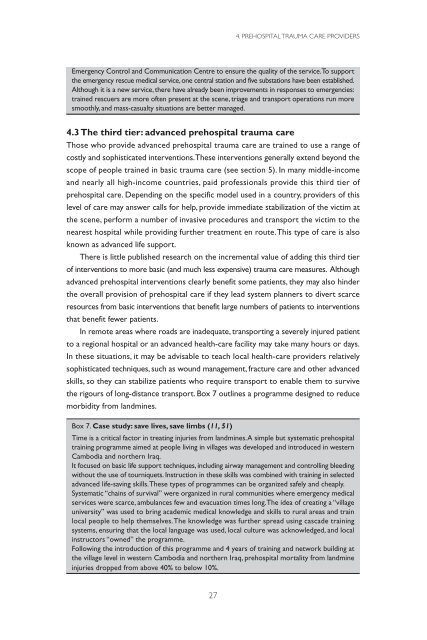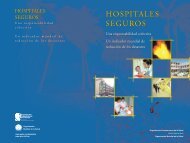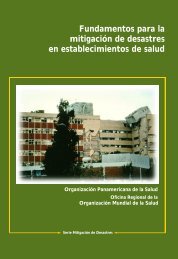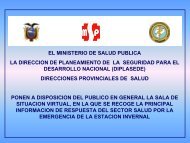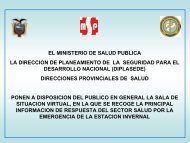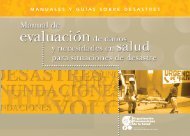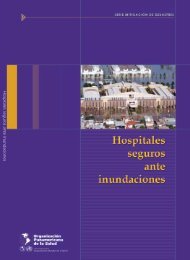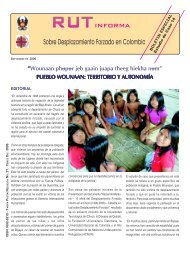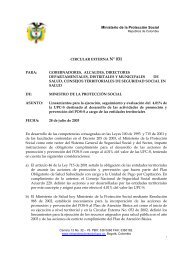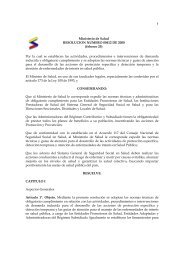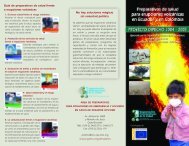Prehospital trauma care systems - World Health Organization
Prehospital trauma care systems - World Health Organization
Prehospital trauma care systems - World Health Organization
Create successful ePaper yourself
Turn your PDF publications into a flip-book with our unique Google optimized e-Paper software.
4. PREHOSPITAL TRAUMA CARE PROVIDERS<br />
Emergency Control and Communication Centre to ensure the quality of the service.To support<br />
the emergency rescue medical service, one central station and five substations have been established.<br />
Although it is a new service, there have already been improvements in responses to emergencies:<br />
trained rescuers are more often present at the scene, triage and transport operations run more<br />
smoothly, and mass-casualty situations are better managed.<br />
4.3 The third tier: advanced prehospital <strong>trauma</strong> <strong>care</strong><br />
Those who provide advanced prehospital <strong>trauma</strong> <strong>care</strong> are trained to use a range of<br />
costly and sophisticated interventions.These interventions generally extend beyond the<br />
scope of people trained in basic <strong>trauma</strong> <strong>care</strong> (see section 5). In many middle-income<br />
and nearly all high-income countries, paid professionals provide this third tier of<br />
prehospital <strong>care</strong>. Depending on the specific model used in a country, providers of this<br />
level of <strong>care</strong> may answer calls for help, provide immediate stabilization of the victim at<br />
the scene, perform a number of invasive procedures and transport the victim to the<br />
nearest hospital while providing further treatment en route.This type of <strong>care</strong> is also<br />
known as advanced life support.<br />
There is little published research on the incremental value of adding this third tier<br />
of interventions to more basic (and much less expensive) <strong>trauma</strong> <strong>care</strong> measures. Although<br />
advanced prehospital interventions clearly benefit some patients, they may also hinder<br />
the overall provision of prehospital <strong>care</strong> if they lead system planners to divert scarce<br />
resources from basic interventions that benefit large numbers of patients to interventions<br />
that benefit fewer patients.<br />
In remote areas where roads are inadequate, transporting a severely injured patient<br />
to a regional hospital or an advanced health-<strong>care</strong> facility may take many hours or days.<br />
In these situations, it may be advisable to teach local health-<strong>care</strong> providers relatively<br />
sophisticated techniques, such as wound management, fracture <strong>care</strong> and other advanced<br />
skills, so they can stabilize patients who require transport to enable them to survive<br />
the rigours of long-distance transport. Box 7 outlines a programme designed to reduce<br />
morbidity from landmines.<br />
Box 7. Case study: save lives, save limbs (11, 51)<br />
Time is a critical factor in treating injuries from landmines.A simple but systematic prehospital<br />
training programme aimed at people living in villages was developed and introduced in western<br />
Cambodia and northern Iraq.<br />
It focused on basic life support techniques, including airway management and controlling bleeding<br />
without the use of tourniquets. Instruction in these skills was combined with training in selected<br />
advanced life-saving skills.These types of programmes can be organized safely and cheaply.<br />
Systematic “chains of survival” were organized in rural communities where emergency medical<br />
services were scarce, ambulances few and evacuation times long.The idea of creating a “village<br />
university” was used to bring academic medical knowledge and skills to rural areas and train<br />
local people to help themselves.The knowledge was further spread using cascade training<br />
<strong>systems</strong>, ensuring that the local language was used, local culture was acknowledged, and local<br />
instructors “owned” the programme.<br />
Following the introduction of this programme and 4 years of training and network building at<br />
the village level in western Cambodia and northern Iraq, prehospital mortality from landmine<br />
injuries dropped from above 40% to below 10%.<br />
27


